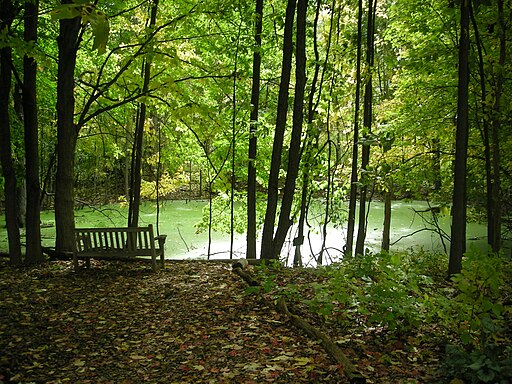
The native plant movement has been growing in recent years, and for many this means sun-loving plants and showy wildflowers.
It’s increasingly common to find gardens showcasing plants like purple coneflower, black eyed susan and milkweed, while concepts like the “pocket prairie” and “mini meadow” have become more mainstream.
Native shade plants, on the other hand, often don’t get as much attention. On the whole their impact in a garden is more subtle and they are less showy and vibrant. Additionally, many species take multiple years to establish and bloom in the home garden, which might seem to long to wait for some gardeners.
But in this article I’ll attempt to make a case for why native shade plants are some of the most important you can add to your yard, and why planting a shade garden is something you should consider doing today.
Why are Native Shade Gardens Especially Important?
Shade gardens are becoming increasingly important for climate-change reasons. Since trees capture and store carbon dioxide as they mature, shade gardens help us lower our carbon footprint, and they also help cool our yards and homes significantly which gives us some relief from rising temperatures.
And the benefits of home shade gardens extend beyond our own properties and to the larger ecological context.
Doug Tallamy has argued that in order to solve the biodiversity crisis, protecting natural areas is not enough; we also need a major number of homeowners to convert some of their yards to native plants.
In the typical suburban yard, the one plant category that is still very common is native shade trees like oaks and maples.
As we’ve said, these trees are great for many ecological reasons, but the ground underneath them is almost always either mowed turfgrass or invasive groundcovers in a garden bed (English ivy, vinca etc.).
And larger properties with wooded areas are also affected by larger invaders like bush honeysuckle as well as excessive deer browsing due to overpopulation.
Because of these trends, the lower understory layers that typically accompany these trees in forests are much more rare and continuing to disappear, a process that is also occurring at an alarming rate in natural woods in and near the same suburbs.
One article said that it’s crucial to protect these native plants, because “without them, the forest loses its rich diversity and resiliency to droughts and floods.”
Another said that understory herbaceous make up an “important functional group” and that their loss leads to “a potential weakening of local ecosystem stability and a decrease in the function of ecosystem processes.”
And nonnative replacements “are typically not effective substitutes for native plants with regard to ecosystem process function.”
Put simply, “stability is only achieved if all elements of a forest are present” (Rainer and West), and another study reflects more deeply on the biodiversity implications:
“Although plant species richness is higher in the herbaceous layer than in any other forest stratum, discussions of threats to biodiversity often omit the herb layer. This is ironic, because herbaceous species have higher natural extinction rates than plant species in other strata. Thus, threats to forest biodiversity are most often a function of threats to herbaceous-layer species Despite the small stature of the herbaceous layer … it has a quantifiable significance at the ecosystem level, mediating carbon dynamics and energy flow and influencing the cycling rates of essential nutrients, including N, P, K, and Mg.”
With these findings in mind, your shade garden can help to bring back some of the diversity of woodland herbaceous plants that are likely rare in your immediate area, and help replenish the native seed bank or even directly fend off creeping invasives.
Spring ephemerals are also one category of shade garden plant with special importance. They bloom for a short period in early spring before the tree canopy leafs out, and they are a vital source of nectar for a wide variety of pollinators at a time when little else is flowering.
Shade Garden Logistics: What if You Don’t Have Mature Trees?
Much of this article has talked about shade gardens in the context of forest settings; but in order to plant a shade garden you don’t necessarily have to have large established trees. Looks for areas near your house, fences, or other structures that block the sun at certain times of the day. (A spot on the north side of your house is often a great place for shade, for example.)
If you do have existing trees in your yard, you can plant a shade garden under them. Just be careful of the tree’s root system and avoid disturbing it when planting. (Smaller plugs would be a better choice than gallon pots, for example.)
And finally, when designing your shade garden do think in terms of the various layers that are found in natural woodlands: the tall canopy trees, smaller understory trees, shrubs, herbaceous perennials, and lower-growing groundcovers.
Planting for multiple layers of height, rather than just a garden bed with plants all relatively the same size, adds significant visual interest and helps to provide habitat that will support even more wildlife from insects to birds.
Ready for some ideas of what to plant? Try a site like the National Wildlife Federation’s plant finder or read our article on some of the best shade plants to add to your garden.
Leave a Reply